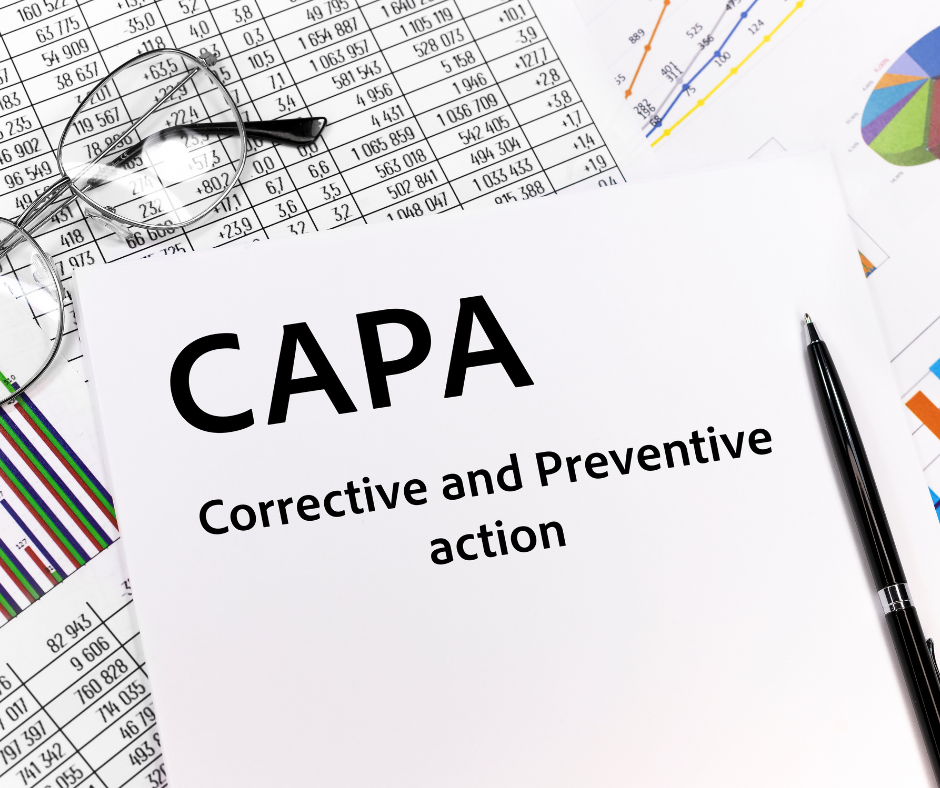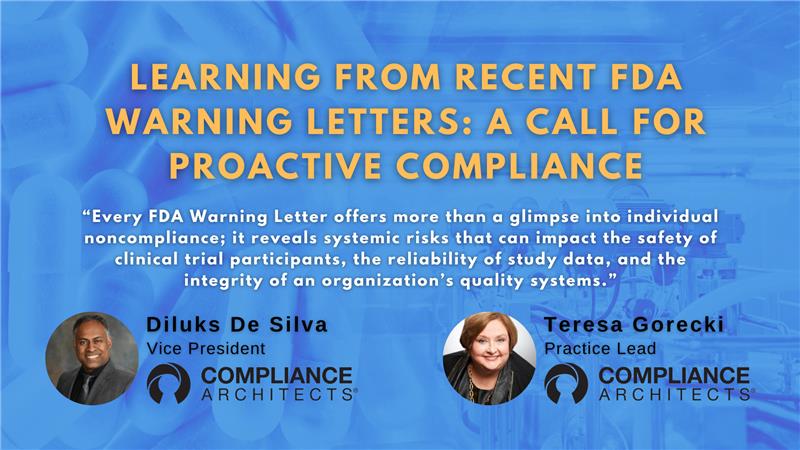Beyond Compliance: Building a Culture of Learning Through CAPA
In the pharmaceutical and life sciences industry, the Corrective and Preventive Action (CAPA) process is one of the most powerful yet often misunderstood mechanisms for driving sustainable quality improvement. At its core, CAPA is not simply a compliance tool; it is a structured framework for organizational learning, systemic correction, and continuous prevention.
Regulators such as the FDA, EMA, and other global health authorities expect every regulated company to maintain a functioning CAPA system as part of its quality management framework. This expectation is reflected in regulations and standards that emphasize the need to investigate nonconformances, determine the true root causes, implement effective corrective actions, and verify the prevention of recurrence.
However, many organizations approach CAPA narrowly, treating it as an administrative exercise to close deviations, satisfy auditors, or “check the box” for compliance. When CAPA is reduced to a form-filling process, its real value is lost. Investigations become superficial, systemic causes remain unaddressed, and the same problems quietly return in new forms.
The true intent behind CAPA is far more profound:
- To identify and eliminate the underlying weaknesses in systems and processes that lead to product or process failures.
- To prevent recurrence and spread of similar issues by capturing, analyzing, and acting upon trends.
- To embed critical thinking and accountability across the organization, ensuring that every event becomes an opportunity to strengthen controls and protect patients.
A well-implemented CAPA program can transform quality culture by promoting transparency, data-driven decision-making, and cross-functional ownership. It shifts the mindset from “closing records” to “closing knowledge gaps.” And in doing so, CAPA becomes not just a regulatory expectation but a strategic advantage —a driver of trust, consistency, and operational excellence across the enterprise.
Shape The Regulatory Intent Behind CAPA
The foundation of CAPA is rooted in a regulatory philosophy that holds that product quality and patient safety depend on continuous learning and improvement. From the earliest Good Manufacturing Practice (GMP) regulations to modern Quality System expectations, regulators have consistently emphasized that every failure or deviation should become an opportunity to strengthen systems and prevent recurrence.
Under 21 CFR 820.100, the FDA explicitly requires that manufacturers “investigate the cause of nonconformities relating to product, process, and the quality system and take corrective and preventive action to prevent recurrence.” Similar expectations are embedded throughout 21 CFR 211 for pharmaceutical manufacturers, particularly in 21 CFR 211.22 (Responsibilities of the Quality Unit), 211.192 (Production Record Review), and 211.180(e) (Evaluation of Records and Trends). Together, these clauses establish that effective CAPA is not optional; it is the regulatory mechanism for continual quality improvement.
Globally, ICH Q10 – Pharmaceutical Quality System elevates CAPA beyond compliance, positioning it as a key enabler of continual improvement across the product lifecycle. The guideline envisions an integrated system where information flows seamlessly from deviations, complaints, and audits to management review and risk management, forming a self-correcting loop of detection, analysis, and prevention.
The true intent of CAPA, therefore, is not merely to fix what went wrong but to build organizational intelligence, turning failures into knowledge, strengthening control strategies, and ensuring that the company not only complies but understands why compliance exists: to protect patients and sustain the reliability of medicines and medical devices.
When regulators evaluate a CAPA program, they are looking for evidence that the system is alive. During inspections, FDA and other health authorities assess not just the presence of CAPA procedures, but how the process is used, whether it drives proactive prevention or remains a reactive documentation exercise. They ask questions such as:
- Are CAPAs consistently linked to meaningful root causes?
- Are preventive actions truly preventive, or merely corrections in disguise?
- Are effectiveness checks based on measurable criteria and objective data?
- Are CAPA outcomes communicated and applied across similar operations or sites?
Any organization that can answer these questions with confidence demonstrates maturity, a shift from performing CAPA for compliance to performing CAPA for continuous improvement.
Why CAPA Often Fails to Deliver

Even in well-established pharmaceutical and life sciences organizations, many CAPA systems fall short of achieving their intended outcomes. Despite having well-documented procedures and clearly defined workflows, the spirit of CAPA is about learning, prevention, and continuous improvement; however, it often gets lost in the drive for compliance metrics.
Some of the standard failure modes include:
- Overemphasis on closure dates rather than root-cause accuracy: Organizations often measure CAPA success by timeliness rather than effectiveness. As a result, investigations are rushed to meet deadlines, leading to superficial conclusions and recurring issues.
- “Human error” is cited as the default root cause: When investigations stop at “operator error,” the organization misses an opportunity to examine deeper systemic contributors such as training design, process complexity, communication, or equipment reliability.
- Poor linkage between deviations, complaints, and risk assessments: CAPAs are sometimes treated in isolation rather than linked to trending data, risk evaluations, and change control systems, thereby weakening the ability to identify patterns and prevent similar events elsewhere.
- Ineffective verification of preventive actions: Many CAPAs close without measurable criteria for effectiveness. Without defined success indicators or follow-up verification, the same problems quietly return under new circumstances.
- Lack of transparency or cross-functional collaboration: CAPA ownership confined to the QA unit. When other functions, such as Manufacturing, QC, Supply Chain Engineering, and MS&T, are not engaged, the process loses its operational relevance and learning potential.
These pitfalls are not procedural; they are cultural. They stem from how organizations perceive CAPA: as an obligation rather than an opportunity. Recognizing and addressing these shortcomings is the first step toward building a strong quality culture with CAPA that values learning over speed and systemic improvement over closure.
In the end, CAPA systems fail not because the form is wrong or the e-system, but because of the mindset. A strong quality culture with CAPA requires curiosity, collaboration, and leadership commitment —the very qualities that transform compliance activity into organizational intelligence.
Strengthening the CAPA Process
To support a quality culture with CAPA, the process itself must be clear, consistent, and risk-based. A robust CAPA lifecycle should include:
- Initiation: Defined triggers such as deviations, audit findings, OOS/OOT events, complaints, or trend signals, with risk-based triage.
- Containment and Correction: Immediate mitigation to protect product and patients.
- Investigation: Use structured methodologies such as 5 Whys, Fishbone Diagrams, or Pareto Analysis to determine the actual root and contributing causes.
- Action Planning: Develop measurable corrective and preventive actions linked to specific causes.
- Implementation: Assign accountable owners and track completion.
- Effectiveness Verification: Confirm that actions have prevented recurrence through data trending, sampling, or re-audit.
- Closure and Knowledge Sharing: Document learnings, integrate into training, and update risk registers.
Building the Foundation: Leadership Commitment and Clear Ownership

Creating a great quality culture with CAPA begins with leadership behavior. Executives and senior quality leaders must demonstrate, through actions rather than just policies, that CAPA is a business priority.
Practical steps include:
- Integrate CAPA discussions into management reviews and quality council meetings.
- Link CAPA metrics to performance dashboards and strategic objectives.
- Recognize teams for identifying and resolving systemic issues early.
- Allocate resources for training, investigation tools, and cross-functional collaboration.
Ownership of CAPA must extend beyond the Quality Unit. Manufacturing, Supply chain, Engineering, Validation, and Manufacturing science and technology (MS&T) should view CAPA as their mechanism for improvement, not merely a compliance form owned by QA. When every function recognizes its accountability for identifying root causes and implementing sustainable actions, CAPA evolves from documentation into a shared driver of operational excellence.
This distributed ownership model ensures that CAPA actions are woven into daily decision-making, supported by technical expertise, and maintained long after records are closed.
From Process to Mindset: Why CAPA Must Be Cultural
A CAPA procedure alone cannot drive improvement —people and culture do. The most elegant system or SOP will fail if the organization’s mindset remains reactive or compliance-driven. To truly realize the power of CAPA, it must evolve from a documented process into a shared cultural value — one that defines how people think, act, and respond when problems arise.
In a mature quality culture, CAPA is not a form to fill out after an event; it is a natural reflex, a disciplined way of learning from experience. Issues are no longer viewed as blameworthy failures, but as valuable insights that strengthen systems and safeguard patients.
A Quality Culture with CAPA is characterized by:
- Psychological safety: Employees feel empowered — not fearful — to raise concerns, report deviations, or challenge practices that could compromise quality.
- Curiosity: Investigations seek to understand why a failure occurred, not just who made the mistake. Teams dig beyond “operator error” to identify systemic and process contributors.
- Accountability: Each function owns its role in prevention. Manufacturing, Supply Chain, QC, Engineering, Validation, and MS&T recognize that CAPA is part of their job, not just QA’s paperwork.
- Learning: Lessons learned are shared across the organization so that knowledge gained in one area prevents recurrence in another.
When these attributes take root, the organization shifts from reactive compliance to proactive learning. The focus moves from avoiding regulatory citations to cultivating understanding, from fixing problems to preventing them altogether.
This transformation fundamentally changes how the organization perceives and manages risk. Teams begin to anticipate issues before they escalate. Leaders encourage transparency rather than control it. Conversations about CAPA become conversations about improvement, not defense.
Conclusion
Building a Quality Culture with CAPA is not about writing better CAPAs; it is about creating a mindset of ownership, curiosity, and learning. When everyone from the shop floor to the C-suite views CAPA as a tool for continuous improvement, not punishment, compliance naturally follows.
Ready for a deeper dive into your inspection readiness?
Visit us on our inspection readiness page here or reach out directly to speak with one of our experts below.





